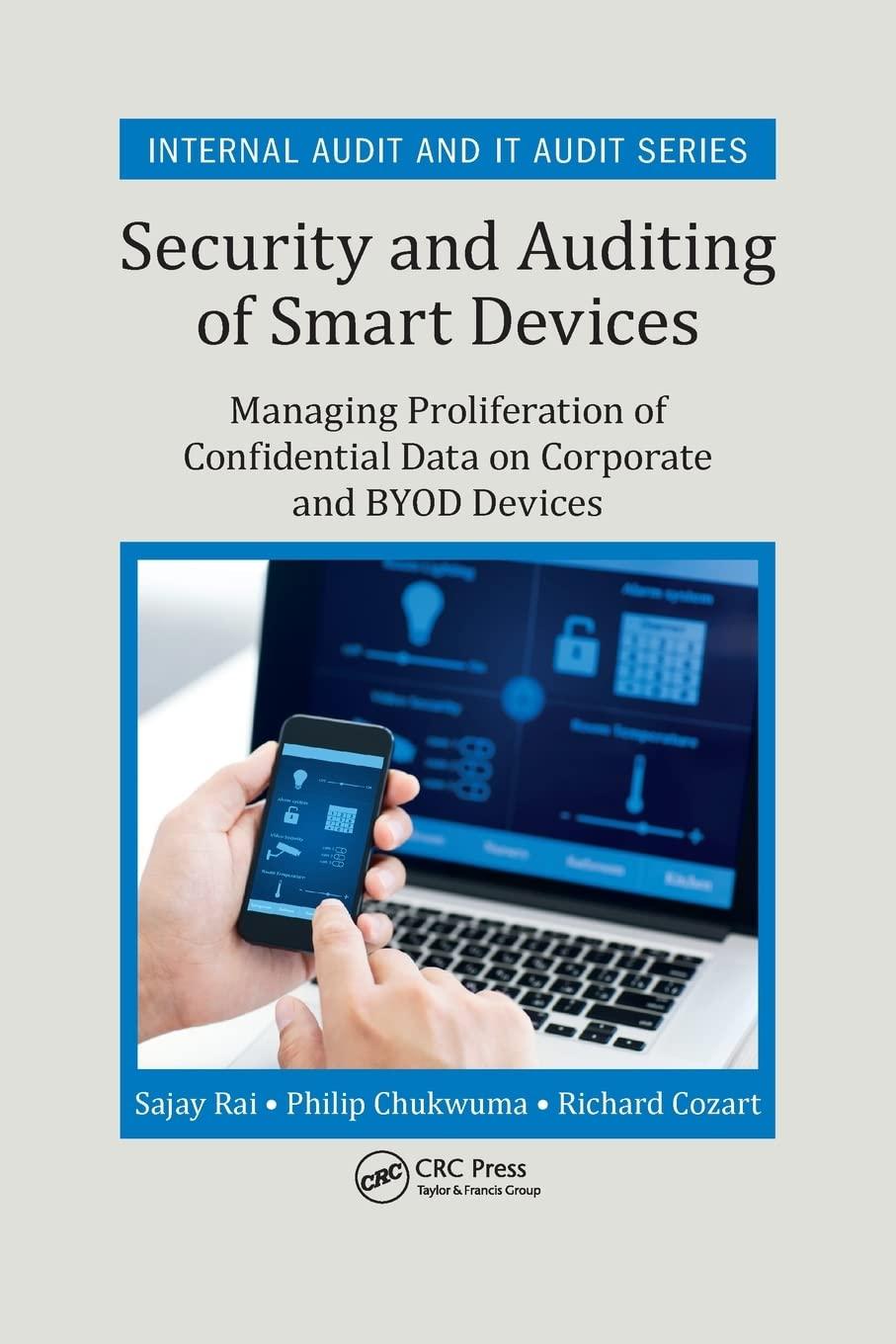Question
Can you help me to answer these questions please? 1. A make-or-buy decision occurs when management must decide whether to sell or purchase a part
Can you help me to answer these questions please?
1. A make-or-buy decision occurs when management must decide whether to sell or purchase a part or material used in manufacturing another product. Select one: True False
2. A sunk cost is a cost that was incurred in the past and cannot be changed regardless of which future action is taken. Select one: True False
3. If a business is considering buying a new vehicle, the cost of insurance on the new vehicle is the information that is relevant to the business decision. Select one: True False
4. Discretionary Fixed Costs relate to the basic facilities and organizational structure that a company must have to continue operations. Select one: True False
5. Differential analysis involves analyzing the different costs and benefits that would arise from alternative solutions to a particular problem. Select one: True False
6. Fixed costs that do not differ between two alternatives are ________. Select one: A. important only if they represent a material dollar amount. B. relevant to the decision C. considered opportunity costs D. considered irrelevant to the decision
7. A depreciable asset's original cost is relevant when considering whether to replace the depreciable asset. Select one: True False
8. When a company is considering the option of processing its product further, to achieve higher sales revenues, they must ignore the ________. Select one: A. incremental revenue that can be earned if processed further B. cost that is required to produce the basic product, before processing further C. additional costs necessary to process further D. fact that will additional processing produce any environmental toxins
9. An opportunity cost is the potential benefit that is forgone by not following the next best alternative course of action. Select one: True False
10. Which of the following is a capital budgeting method that ignores the time value of money?
Select one:
A. internal rate of return
B. net present value
C. payback
D. return on assets
11. Which of the following is a capital budgeting method that is used to screen potential investments?
Select one:
A. debt-to-equity ratio
B. unadjusted rate of return
C. return on assets
D. acid test ratio
12. When comparing several investments with the same initial outlay, the decision should be made on the basis of the ________.
Select one:
A. highest ARR
B. longest payback period
C. highest NPV
D. highest total cash inflows
13. Flint Systems is considering investing in production-management software that costs $600,000, has $60,000 residual value, and leads to cost savings of $150,000 per year over its five-year life. Calculate the average amount invested in the asset that should be used for calculating the unadjusted rate of return?
Select one:
A. $600,000
B. $660,000
C. $330,000
D. $60,000
14. Cash flows used in NPV and IRR analysis ignore ________.
Select one:
A. depreciation expense
B. future increased sales
C. future cost savings
D. residual value
15. Which of the following describes the time value of money?
Select one:
A. Money can be used only at certain times and only for certain purposes.
B. Wasted time can result in wasted money.
C. Value of a dollar received today will be higher than that received after some time.
D. Money loses its purchasing power over time through inflation.
16. Capital budgeting is the ________.
Select one:
A. preparation of the budget for operating expenses
B. process of planning the investment in long-term assets
C. process of making pricing decisions for products
D. process of evaluating the profitability of a business
17. Which of the following capital budgeting methods uses accrual accounting information? (Hint: it considers net income)
Select one:
A. unadjusted rate of return
B. internal rate of return
C. payback
D. net present value
18. The net present value method uses the companys required minimum rate of return as a discount rate and discounts all expected after-tax cash inflows and outflows from the proposed investment back to their present values.
Select one:
True
False
19. The term "net present value" means the difference between the ________.
Select one:
A. total net income of the project and the initial investment.
B. present value of the net cash inflows and the investment's cost.
C. initial investment and the residual value.
D. future value of the cash flows and the present value of the cash flows.
Step by Step Solution
There are 3 Steps involved in it
Step: 1

Get Instant Access to Expert-Tailored Solutions
See step-by-step solutions with expert insights and AI powered tools for academic success
Step: 2

Step: 3

Ace Your Homework with AI
Get the answers you need in no time with our AI-driven, step-by-step assistance
Get Started


